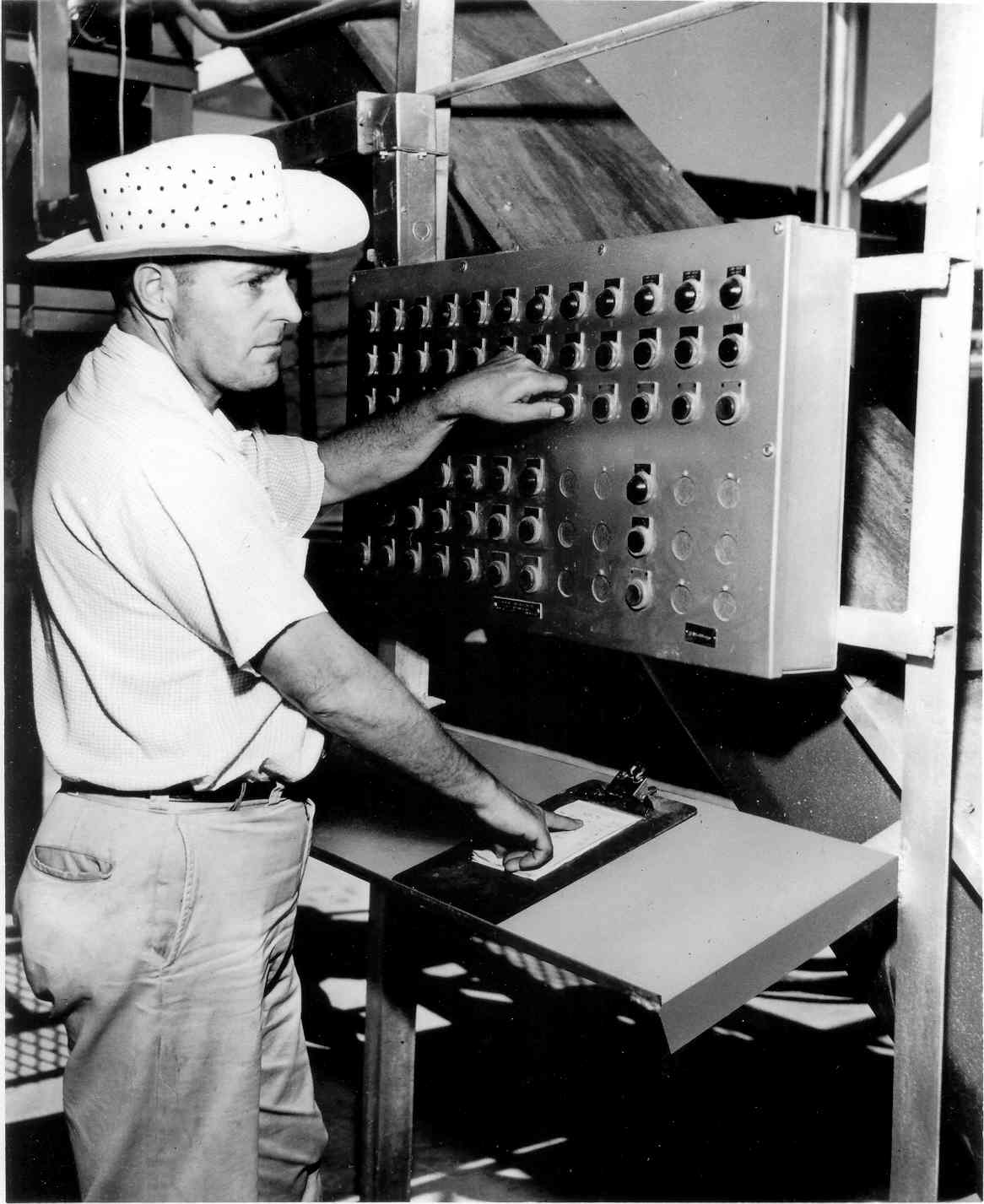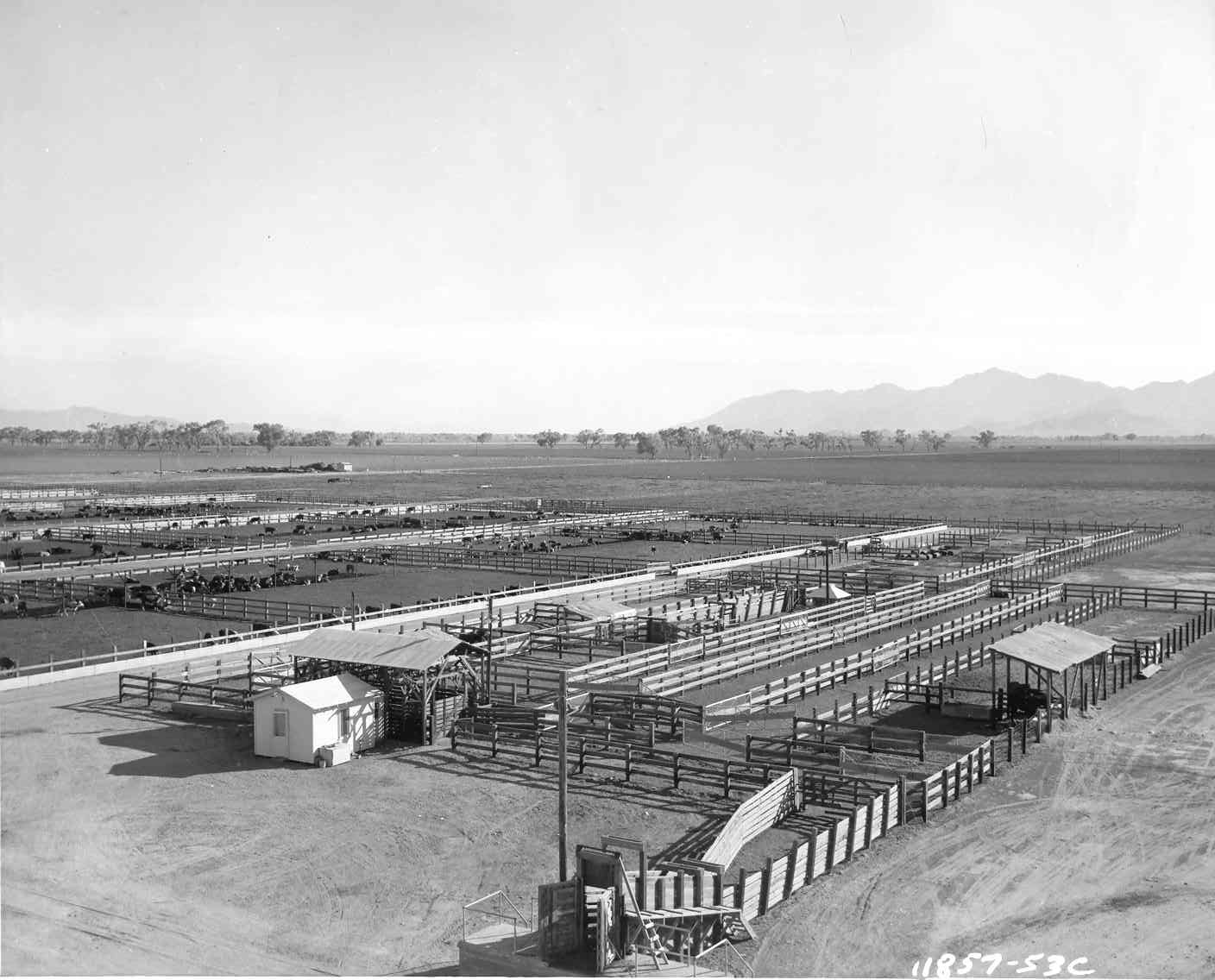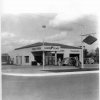Litchfield Park Cattle
Cattle Operations
Litchfield Park
 After cotton farming subsided on the Goodyear Farms they went more heavily into scientific grains and started a large cattle operation. Goodyear Farms had no cattle of its own, but one of their more important operations was cattle feeding. The cattle operation was started in 1929 and increased into a big business in the late 40’s and 50’s.
After cotton farming subsided on the Goodyear Farms they went more heavily into scientific grains and started a large cattle operation. Goodyear Farms had no cattle of its own, but one of their more important operations was cattle feeding. The cattle operation was started in 1929 and increased into a big business in the late 40’s and 50’s.
Farmers from around the country contracted with Goodyear Farms to take their herds of 100 or so and feed them scientific feed. The cattle were brought in at around 400 lbs. and they were fattened up to 1000 lbs. The cattle operation was a main feature of the Farms and it took a lot of time and a special feeding system to supply food for the 8,000 to 9,000 head of cattle that had to be fed and cared for each day. Goodyear Farms received cattle twice a year and fed up to 18,000 per year.
The contracted cattle were brought in to be fed dry feed consisting of alfalfa hay, barley grains, sorghum grains, cottonseed meal, minerals, antibiotics, molasses and tallow. All ingredients with the exception of minerals, molasses and tallow were produced by Goodyear Farms. Ingredients were mixed in a modern feed plant and hauled to feed bunkers in trailer wagons and unloaded automatically into troughs. In addition to the special formula food the cattle were fed maize and hay. Fresh water was constantly available to the cattle. Goodyear Farms treated the cattle very well as they were also inoculated and dehorned.
The cattle were kept 100-200 per pen and there were so many pens if they were stretched end to end they would be six miles long. A railroad spur came right up to the pens for ease of delivery and pick up. Their automatic feed system could feed up to 600 cattle at one time. When the cattle reached 1,000 pounds they were shipped out at night to the Los Angeles market because it was cooler and they kept their weight better. Some of the cattle were shipped back to their owners who marketed them in their own markets.





